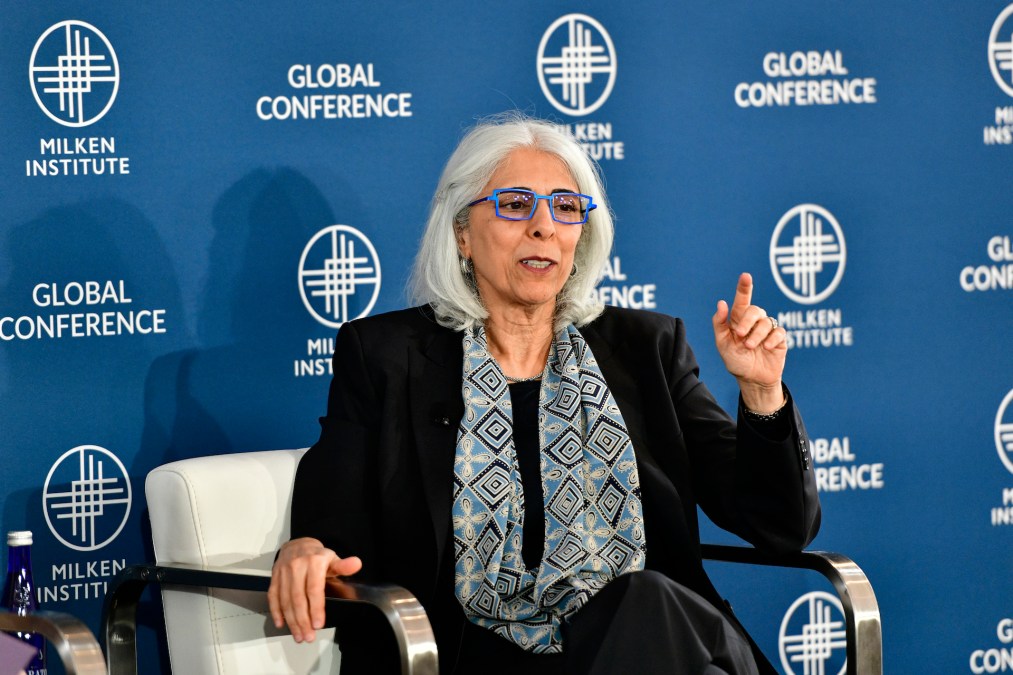U.S. is leading the way in R&D, but tech workforce development is still a concern for federal officials

The United States recently reached a record high for research and development spending and leads all other countries in such expenditures, but that hasn’t stopped Biden administration officials from voicing concerns about lagging STEM education performance and how it impacts workforce development and recruitment efforts for the federal government.
During a Wednesday event on U.S. investment in R&D, the White House Office of Science and Technology Policy, National Science Foundation and National Science Board discussed findings in The State of U.S. Science and Engineering 2024 report, including the fact that the U.S. spent $806 billion, or 3.5% of its gross domestic product, on R&D in 2021.
While officials were eager to share R&D successes from the federal government, they also looked to the report to shed light on workforce development needs for STEM-related fields, as well as the need to enhance educational opportunities for domestic students.
“R&D is how we open the doors so that the future can be better than the past; it’s how we overcome the limitations of today and step into a better tomorrow,” OSTP Director Arati Prabhakar said during the event. “This report and the president’s budget both remind us of the tremendous strengths that we have here in America with our R&D capabilities, and they also start us on this important path to the work ahead.”
President Joe Biden’s fiscal year 2025 budget leans into innovation through R&D efforts: A fact sheet OSTP shared with FedScoop highlights a request for a 36% funding increase (to a reported $900 million) for NSF’s Directorate for Technology Innovation and Partnerships, along with $606 million for the Department of Energy’s Office of Science to “integrate supercomputing, AI and quantum-based technology for developing the next-generation high-performance computing systems.”
“Most of these innovation-intensive industries, of course, grew out of prior federal R&D investments,” Prabhakar said. “If you think about that, that is true in fields that are diverse as artificial intelligence and new medicines and clean energy, so I think it’s a very consistent theme.”
Additionally, OSTP shared in the release that artificial intelligence R&D funds will be spread across federal agencies to further the development of responsible AI, citing a budget request of $729 million for NSF, a 10% increase, including $30 million for a second year of the National AI Research Resource pilot.
An OSTP spokesperson shared in an email that the FY 2025 budget also includes a reported $32 million request to support the AI talent surge, and pointed to upcoming Office of Management and Budget issuance of AI guidelines for government to both address risks and encourage innovation.
OMB “will soon issue the first governmentwide policy to mitigate the risks and harness the benefits in the federal government’s own use of AI,” the spokesperson said. “To fully deliver on this mission, we need the right people. President Biden launched an AI talent surge to bring more AI professionals into the Federal government to help us achieve our ambitious AI agenda. … We’re very excited about the talent we’ve brought on to date, and the talent we will bring on to work on high-priority AI projects.”
The spokesperson noted the Presidential Innovation Fellows, the U.S. Digital Corps and the U.S. Digital Service as some of the tech talent programs that have been advancing the goals of the administration where the AI talent search is concerned.
Still, the country can’t rely solely on those programs, given the fact that occupations requiring STEM knowledge account for 24% of the U.S. workforce, and 19% of all STEM workers were born abroad, per the report. NSB Chair Dan Reed said the flow of domestic talent into the STEM workforce has to increase. The total STEM workforce is around 37 million individuals, a mix of those with at least a bachelor’s and those with technical skills who do not have at least an undergraduate degree.
Reed acknowledged the value of attracting foreign workers, calling the country “a global magnet for talent. That’s been one of our superpowers, that the best and the brightest on the planet want to study and work here. We have to preserve that, but it’s not a given. They come because they see opportunities; we have to continue to create those opportunities.”
For the domestic workforce, Reed said there is cause for concern, and it starts with education.
The NSB chair referenced the report’s findings of a “sharp decline” in elementary and secondary education mathematics performance, and the fact that women and minorities are underrepresented when it comes to bachelor’s and graduate degrees in science and engineering.
“We have to improve access to higher education as students are to pursue advanced STEM degrees,” Reed said. At the same time, the country “must continue to welcome international students from around the globe and to implement policies that entice [and] enable them to stay and work here after they receive their degrees.”



